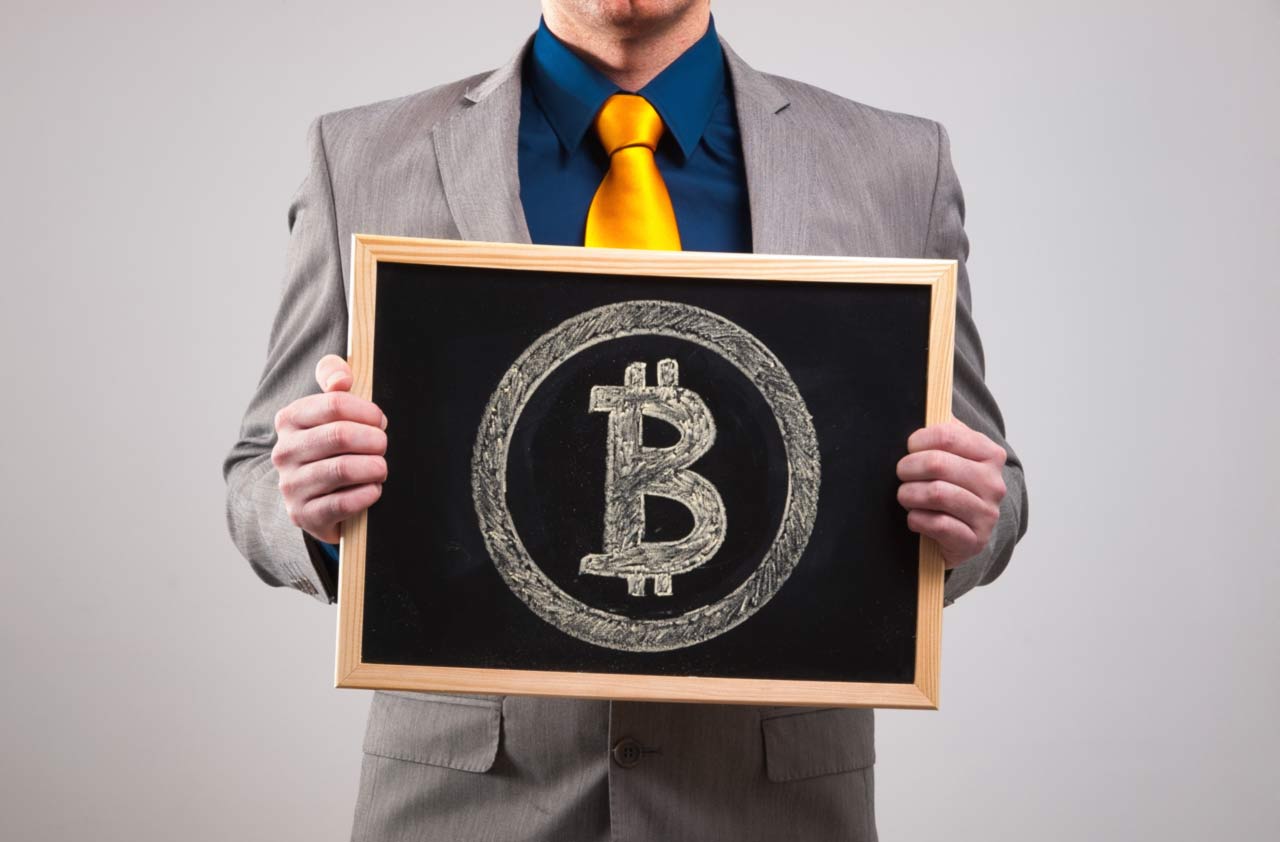The Bitcoin IRA: 5 Essential Facts You Need to Know
When you think IRA investments, you're probably not thinking bitcoin. With a self-directed IRA, investing in the skyrocketing currency could be an option. But should you go for it?


You can’t escape the hype. It seems that everywhere you turn, people are talking about bitcoin. But few people understand what bitcoin is and how it works.
Bitcoin is a peer-to-peer system where transactions typically take place directly between users. It works without a single or central administrator, unlike the U.S. dollar, which is produced and managed entirely by the U.S. Treasury and the Federal Reserve. Bitcoins can be exchanged for services, products and various currencies. As we have seen in recent years, the currency can also be used for investment purposes.
One method of investing in bitcoin that has been increasing in popularity is the use of an individual retirement account (IRA). Is this legal? How is the account established?
From just $107.88 $24.99 for Kiplinger Personal Finance
Become a smarter, better informed investor. Subscribe from just $107.88 $24.99, plus get up to 4 Special Issues

Sign up for Kiplinger’s Free Newsletters
Profit and prosper with the best of expert advice on investing, taxes, retirement, personal finance and more - straight to your e-mail.
Profit and prosper with the best of expert advice - straight to your e-mail.
Investments made using traditional IRAs are typically handled solely by the financial institution with which the IRA is established. The self-directed IRA (SDIRA), however, allows investors to purchase any asset permitted by law. It is capable of holding both conventional assets (stocks and bonds) and alternatives, such as gold and bitcoin.
That said, there is technically no such thing as a bitcoin IRA. There is only the SDIRA that can be used for investing in the so-called cryptocurrency. If you’re considering this option, here are some essential facts to consider.
1. The Self-Directed IRA landscape is evolving.
SDIRAs are flexible, allowing for diverse investments. As many investors are getting bored with traditional investments, such as stocks and mutual funds, more investment variety is being introduced to the market. This evolution of the SDIRA landscape includes the introduction and growing popularity of the idea of investing in bitcoin.
2. Bitcoin has increased in value.
Bitcoin valuations have skyrocketed. The usage of bitcoin has grown, as well, with over 100,000 vendors currently accepting bitcoins as a form of payment. Since a single bitcoin has gone from being valued at 8 cents in 2010 to well over $6,000 today, it makes sense that it is being used more and more as a form of investment. But beware, as a correction could come at any time.
3. The viability of bitcoin IRA investments is questionable.
While it is known that bitcoin values have increased beyond any early predictions, it is unknown how much longer these increases will continue. In fact, should you be looking to invest your IRA in bitcoin, it would be wise to keep it a very small amount of your entire portfolio. It is still very speculative. Make sure to consult with your financial adviser on your portfolio allocation.
4. The legality of bitcoin is currently being debated worldwide.
Some countries, such as Australia and Canada, explicitly permit bitcoins and bitcoin transactions, while others, including Iceland, have strictly prohibited the cryptocurrency. China has allowed the holding and trading of bitcoins but banned the participation of its financial institutions in these activities. Some countries, such as Australia and Canada, explicitly permit bitcoins and bitcoin transactions, while others, have strictly prohibited the cryptocurrency. China has recently banned bitcoin trading, which forced many bitcoin operators to shut down or move their servers offshore.
Bitcoin has been permitted in the United States. However, debate is ongoing, such as whether or not any restrictions should be placed on the cryptocurrency. The IRS in 2014 published guidance stating that it “does not approve IRA investments,” but the agency doesn’t explicitly prohibit them either, which brings us to our next fact.
5. The IRS does not prohibit IRA investments into Bitcoins.
Regarding legality in the United States, investors can find comfort in the lack of specific legal restrictions. Currently, the Internal Revenue Service only prohibits IRA investments in life insurance and collectibles such as stamps, artwork, metals, coins, etc. This stipulation means that you are technically allowed to use your SDIRA to invest in bitcoin, as it is not specifically named in either of the prohibited investment categories.
The legality, stability and investment potential of bitcoin have all been intensely debated — often without clear answers or solutions. In the end, it is up to you to decide what to invest in using your SDIRA.
If you plan to invest in bitcoin using an SDIRA, make sure you do so through a self-directed custodian that does not restrict your investments solely to cryptocurrencies. This way, you can use your SDIRA to act on any significant investment that comes your way.
But be cautious. Bitcoin is very speculative and only should be invested in with careful consideration.
Profit and prosper with the best of Kiplinger's advice on investing, taxes, retirement, personal finance and much more. Delivered daily. Enter your email in the box and click Sign Me Up.

Paul Sundin is a CPA and tax strategist. With a worldwide client base, he specializes in tax planning and tax structuring for individuals, entrepreneurs and the real estate industry. In addition to being a CPA, he is also an author, speaker and consultant. His professional mission is to educate taxpayers on tax strategies and personal finance.
-
 I'm want to give my 3 grandkids $5K each for Christmas.
I'm want to give my 3 grandkids $5K each for Christmas.You're comfortably retired and want to give your grandkids a big Christmas check, but their parents are worried they might spend it all. We ask the pros for help.
-
 If You're Not Doing Roth Conversions, You Need to Read This
If You're Not Doing Roth Conversions, You Need to Read ThisRoth conversions and other Roth strategies can be complex, but don't dismiss these tax planning tools outright. They could really work for you and your heirs.
-
 Could Traditional Retirement Expectations Be Killing Us?
Could Traditional Retirement Expectations Be Killing Us?A retirement psychologist makes the case: A fulfilling retirement begins with a blueprint for living, rather than simply the accumulation of a large nest egg.
-
 I'm a Financial Planner: If You're Not Doing Roth Conversions, You Need to Read This
I'm a Financial Planner: If You're Not Doing Roth Conversions, You Need to Read ThisRoth conversions and other Roth strategies can be complex, but don't dismiss these tax planning tools outright. They could really work for you and your heirs.
-
 Could Traditional Retirement Expectations Be Killing Us? A Retirement Psychologist Makes the Case
Could Traditional Retirement Expectations Be Killing Us? A Retirement Psychologist Makes the CaseA retirement psychologist makes the case: A fulfilling retirement begins with a blueprint for living, rather than simply the accumulation of a large nest egg.
-
 I'm a Financial Adviser: This Is How You Can Adapt to Social Security Uncertainty
I'm a Financial Adviser: This Is How You Can Adapt to Social Security UncertaintyRather than letting the unknowns make you anxious, focus on building a flexible income strategy that can adapt to possible future Social Security changes.
-
 I'm a Financial Planner for Millionaires: Here's How to Give Your Kids Cash Gifts Without Triggering IRS Paperwork
I'm a Financial Planner for Millionaires: Here's How to Give Your Kids Cash Gifts Without Triggering IRS PaperworkMost people can gift large sums without paying tax or filing a return, especially by structuring gifts across two tax years or splitting gifts with a spouse.
-
 'Boomer Candy' Investments Might Seem Sweet, But They Can Have a Sour Aftertaste
'Boomer Candy' Investments Might Seem Sweet, But They Can Have a Sour AftertasteProducts such as index annuities, structured notes and buffered ETFs might seem appealing, but sometimes they can rob you of flexibility and trap your capital.
-
 Quick Question: Are You Planning for a 20-Year Retirement or a 30-Year Retirement?
Quick Question: Are You Planning for a 20-Year Retirement or a 30-Year Retirement?You probably should be planning for a much longer retirement than you are. To avoid running out of retirement savings, you really need to make a plan.
-
 Don't Get Caught by the Medicare Tax Torpedo: A Retirement Expert's Tips to Steer Clear
Don't Get Caught by the Medicare Tax Torpedo: A Retirement Expert's Tips to Steer ClearBetter beware, because if you go even $1 over an important income threshold, your Medicare premiums could rise exponentially due to IRMAA surcharges.
-
 I'm an Insurance Pro: Going Without Life Insurance Is Like Driving Without a Seat Belt Because You Don't Plan to Crash
I'm an Insurance Pro: Going Without Life Insurance Is Like Driving Without a Seat Belt Because You Don't Plan to CrashLife insurance is that boring-but-crucial thing you really need to get now so that your family doesn't have to launch a GoFundMe when you're gone.